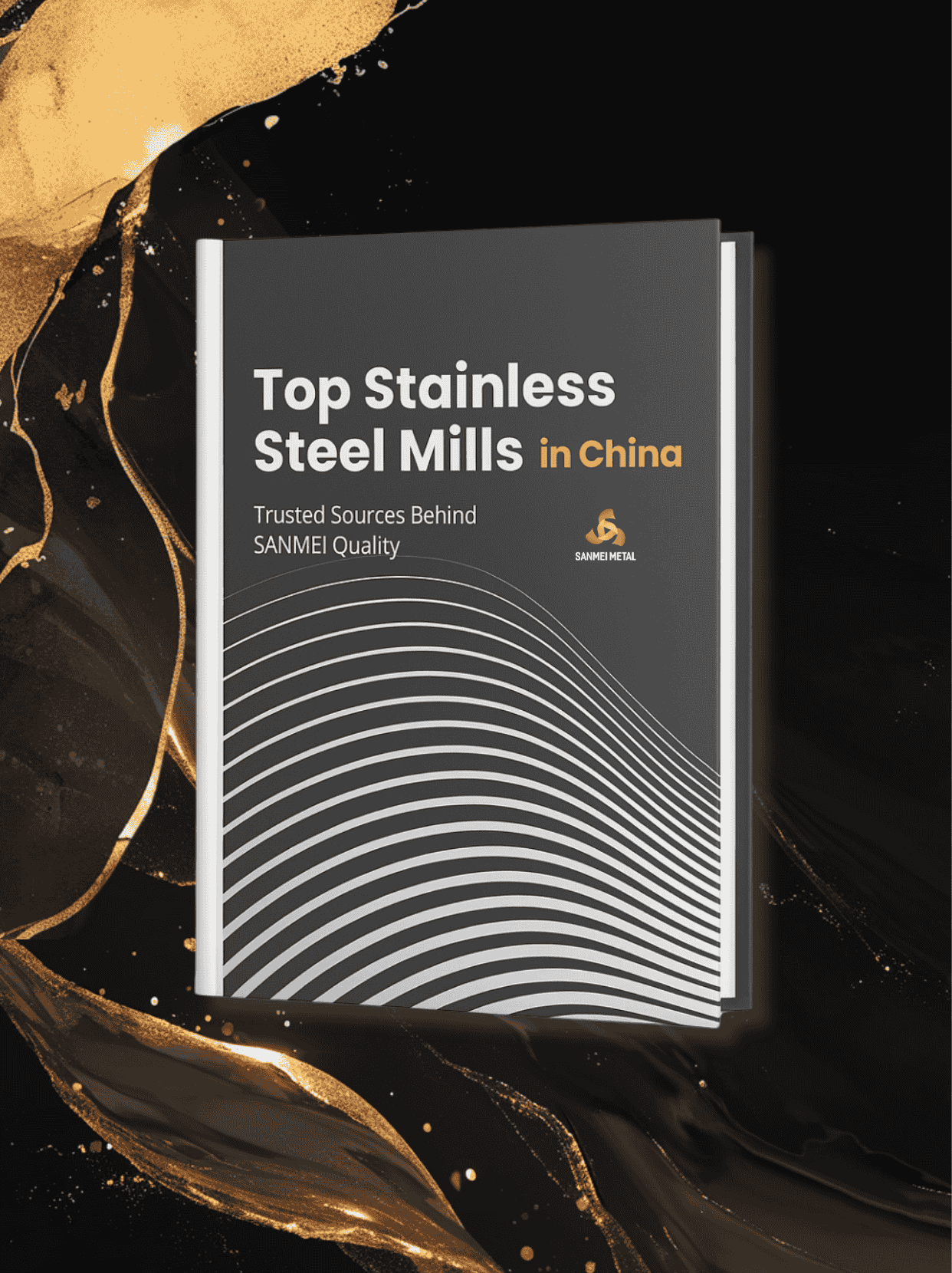
احصل على حر الوصول: ملف مصنع الصلب #1 في الصين
موجه نحو المشتري: مطابقة المطاحن حسب الدرجة/اللمسة النهائية/العرض والسمك/التطبيق
باووتسينغشانليسكوتيسكو


ملخص
الفولاذ المقاوم للصدأ 309S هو فولاذ مقاوم للصدأ أوستنيتي مُركّب من الكروم والنيكل، يتميز بمقاومة أفضل للتآكل والحرارة مقارنةً بالفولاذ المقاوم للصدأ 304. وهو نوع من الفولاذ المقاوم للصدأ 309، يتميز بمحتوى كربون منخفض، مما يجعله مناسبًا لتطبيقات اللحام. يُقلّل محتوى الكربون المنخفض من ترسب الكربيدات في المنطقة المتأثرة بالحرارة بالقرب من اللحام، مما قد يؤدي إلى تآكل بين الحبيبات في بيئات معينة.
الخصائص العامة
يتميز الفولاذ المقاوم للصدأ 309S بمقاومة ممتازة للتسخين المتكرر حتى 980 درجة مئوية، مع متانة عالية في درجات الحرارة العالية ومقاومة للأكسدة والتكرير. وهو معروف بقابليته العالية للتشكيل واللحام، مما يجعله مثاليًا للتطبيقات التي تتطلب أشكالًا وهياكل معقدة.
التطبيقات
يُستخدم الفولاذ المقاوم للصدأ 309S على نطاق واسع في مواد الأفران، ويُستخدم على نطاق واسع في الغلايات، وقطاعات الطاقة (النووية، والوقود الأحفوري، وخلايا الوقود)، والأفران الصناعية، ومحارق النفايات، وأفران التسخين، والصناعات الكيميائية والبتروكيماوية. وهو مناسب للمكونات التي تتطلب التعرض لدرجات حرارة عالية وبيئات تآكلية.
مقاومة التآكل:
يتميز الفولاذ المقاوم للصدأ 309S بمقاومة ممتازة للتآكل في معظم البيئات، بما في ذلك البيئات ذات الحموضة العالية أو التعرض للرطوبة، مثل مياه البحر أو مناطق رذاذ الملح. كما أن محتواه العالي من الكروم (22-24%) يوفر مقاومة ممتازة للتآكل.
مقاومة الحرارة:
يمكن للفولاذ المقاوم للصدأ 309S أن يتحمل درجات حرارة تصل إلى 1000 درجة مئوية دون تأثيرات سلبية على خصائصه الميكانيكية، مما يجعله مثاليًا للتطبيقات التي تنطوي على درجات حرارة عالية، مثل الغلايات أو الأفران.
قابلية التصنيع:
يتميز الفولاذ المقاوم للصدأ 309S بسهولة التشكيل نسبيًا بفضل متانته وقابليته العالية للتشكيل. ومع ذلك، فإنه يتصلب بسرعة، لذا يجب الحفاظ على حدّة الأدوات واستخدام كسارات الرقائق.
اللحام:
يتميز الفولاذ المقاوم للصدأ 309S بقابلية لحام جيدة، ويمكن وصله بطرق لحام تقليدية متنوعة. قد تكون المعالجة الحرارية بعد اللحام ضرورية لمنع التشقق واستعادة مقاومة التآكل، خاصةً في المكونات ذات المقطع العرضي الثقيل.
العمل الساخن:
يُمكن للمعالجة الحرارية تحسين متانة الفولاذ المقاوم للصدأ 309S ومقاومته للتآكل. يُنصح بإجراء المعالجة الحرارية في نطاق درجات الحرارة الذي تكون فيه المادة أكثر مرونة.
العمل البارد:
يزيد التشكيل البارد من صلابة ومتانة الفولاذ المقاوم للصدأ 309S، مع تحسين جودة سطحه ودقة أبعاده. ومع ذلك، قد يقلل من قابليته للسحب والصلابة، لذا قد يلزم التلدين بعد التشكيل البارد لاستعادة هذه الخصائص.
التلدين:
تُستخدم عملية التلدين لتليين الفولاذ، وتحسين قابليته للتشغيل الآلي، وتحضيره لعمليات المعالجة الحرارية اللاحقة. تتضمن العملية تسخين الفولاذ إلى درجة حرارة مناسبة، يليه تبريد بطيء.
التلطيف:
تُستخدم عملية التطبيع لتقليل الهشاشة والإجهادات الداخلية بعد التصلب. وتتضمن تسخين الفولاذ إلى درجة حرارة محددة، ثم تبريده ببطء.
التصلب:
يمكن تقوية الفولاذ المقاوم للصدأ 309S لتحقيق مستويات صلابة عالية من خلال عملية التسخين والتبريد السريع (التبريد). ومع ذلك، نظرًا لطبيعته الأوستينيتية، فإنه لا يستجيب للتصلب بنفس طريقة استجابة الفولاذ المارتنسيتي.
| ملكية | قوة الخضوع، الحد الأدنى (ksi) | قوة الشد، الحد الأدنى (ksi) | الاستطالة، الحد الأدنى (%) | الصلابة، الحد الأقصى (Rb) |
| 309س | 205 | 520 | 40 | 187/90/200 |
| ملكية | قيمة |
|---|---|
| كثافة | 7.98 كجم/دسم³ |
| نقطة الانصهار | 1397-1453 درجة مئوية |
| السعة الحرارية النوعية | 0.50 كيلوجول/(كجم·كلفن) عند درجة حرارة تتراوح من 0 درجة مئوية إلى 100 درجة مئوية |
| الموصلية الحرارية | 15.5 واط/(م·ك) عند 100 درجة مئوية، 18.6 واط/(م·ك) عند 500 درجة مئوية |
| معامل التمدد الحراري | 14.9 × 10^-6/ك عند 0 درجة مئوية إلى 100 درجة مئوية، 18.0 × 10^-6/ك عند 0 درجة مئوية إلى 500 درجة مئوية |
| المقاومة الكهربائية | 0.78 Ω·mm²/m عند 20 درجة مئوية |
| معامل المرونة | 193 كيلو نيوتن/مم² عند 20 درجة مئوية |
درجة | ج | سي | من | ص | س | كر | ني |
|---|---|---|---|---|---|---|---|
309س | ≤0.08 | ≤1.00 | ≤2.00 | ≤0.045 | ≤0.030 | 22.00-24.00 | 12.00-15.00 |

يتحمل درجات حرارة تصل إلى 1000-1100 درجة مئوية (1832-2012 درجة فهرنهايت).

مقاومة ممتازة للأكسدة والتآكل في مجموعة واسعة من البيئات.

يحافظ على القوة والصلابة في درجات الحرارة العالية، مما يجعله مثاليًا للمبادلات الحرارية ومكونات الفرن.

| يكتب | العرض (مم) | الوزن (طن متري) | السمك (مم) | ||||
| ملف 309S | 1000، 1219، 1240، 1500 أو حسب الطلب | 3-10 | 0.15-3.0 | ||||

| يكتب | العرض (مم) | الطول (مم) | السمك (مم) | |||||||||
| 309S أوراق | 1000، 1219، 1240، 1500 أو حسب الطلب | 2000, 2438, 2500, 3000, 3048 | 0.3-3.0 | |||||||||
نحن ملتزمون بتقديم أفضل وأعلى جودة من الخدمة لعملائنا لضمان رضا عملائنا.









معتمدة من قبل مؤسسات مرموقة وملتزمة بالالتزام بالمعايير الدولية في كل جانب.




تعتبر آراء العملاء هي الانعكاس الأكثر أصالة لجودة الشركة.
اطلع على المزيد من المراجع الفنية من Sanmei Metal فيما يتعلق بملفات الفولاذ المقاوم للصدأ وألواح الفولاذ المقاوم للصدأ.
المقر الرئيسي:
مركز الإبداع، رقم ١٤٢، طريق يوهي، بلدة ليكونج، منطقة شوند، مدينة فوشان، مقاطعة قوانغدونغ، الصين. ٥٢٨٣١٥
مصنع: مدينة لييوان اللوجستية، بلدة تشينكون، منطقة شوند، مدينة فوشان، مقاطعة قوانغدونغ، الصين. 528313
قاعدة الدعم المحلية في أستراليا: (ياتالا، كوينزلاند) - قادم في عام 2026